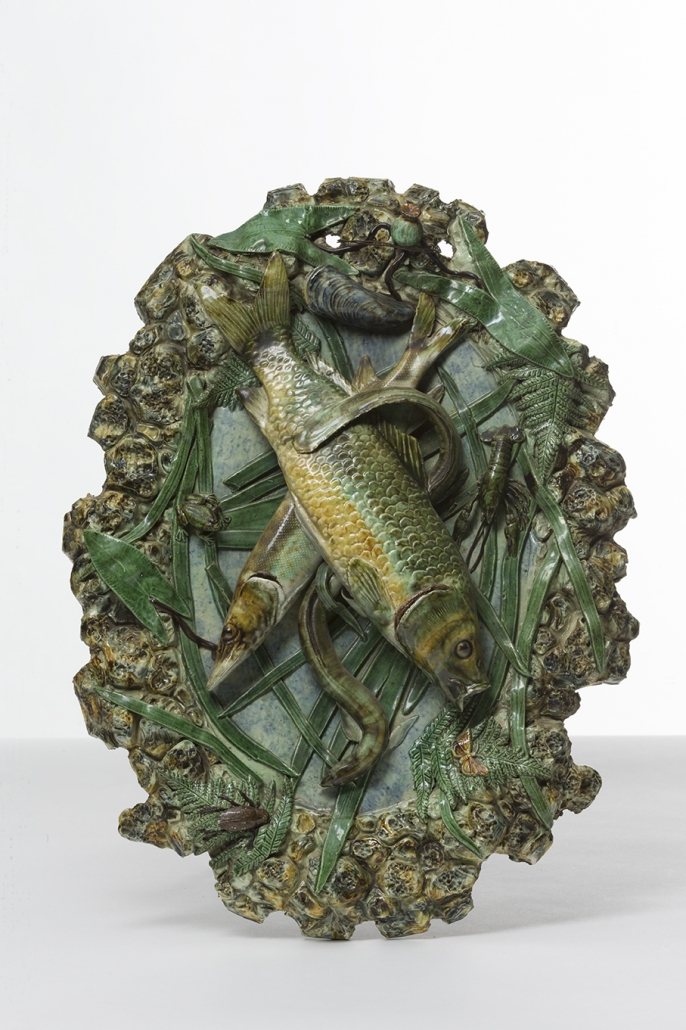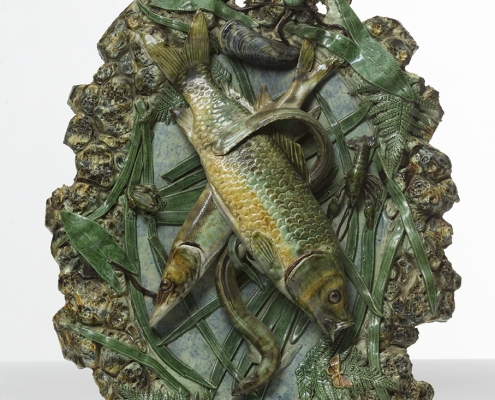Plate with fish and eel decoration – Alfred Renoleau, circa 1890
If the decoration of this piece follows the classic pattern of Bernard Palissy’s dishes, the general shape, closer to a plate, is quite original. In the center of the plate are arranged fish, eel, frog, as on an isolated island. The periphery, not uniform, reminds us of a real rock. This piece is a piece of nature by itself, full of naturalism.
Faithful to the famous potter of the Renaissance, Renoleau represents the animals not overflowing from the islet. He also brings his personal vision by creating a much fuller and richer piece, more in relief.
From the 1880s onwards, Alfred Renoleau, fascinated by the life of Bernard Palissy, sought to follow in the footsteps of the famous potter. He then began to create rustic figulines or ceramics of naturalist inspiration that evoke the abundance of life. This rustic basin is an exceptional piece by its dimensions and the quality of its execution. It is part of the artist’s period of maturity between 1888 and 1890 when he collaborated with the brilliant entrepreneur Eugene Polakowski. Our piece was probably made in the Grandes Tuileries de Roumazières in Charente. The pieces designed by Renoleau were then an unprecedented success and he triumphed at the 1889 Universal Exhibition.
Like the ceramists of the Tours school, Renoleau introduces a new symbolic dimension into his piece, which tells the story of life and death, the story of a predation scene. If the inspiration is naturalistic, it is nevertheless reinvented. Although each animal and plant species is recognizable, their association is completely fortuitous. Renoleau randomly chooses elements of nature that he associates as he pleases, as in a theatrical performance. This approach aims to privilege the decorative aspect. This piece with its jasper background and varied colours offers a very seductive multicoloured fantasy. The result is made possible by a perfect mastery of coloured enamels.





